If you’re considering to travel to Mashhad, you’re in the right place. Mashhad means a place of Shia martyrs and martyrdom. Courageous individuals who sacrificed their lives in the name of their religious view and for the greater good. No shortage of Shia martyrs has been recorded in Islam history and Mashhad stands as a testimony to this statement.
Mashhad is laid out in Kashaf river valley that gives its people access to underground water tunneling systems driven from the river (Qantas). Mashhad is a city that has it all; History, natural landscapes, different ethnicity, heroic figures, luxurious spices, and one-of-a-kind handicrafts. The 21 century Mashhad has grown to be a modern metropolis following the footsteps of its quicker and larger brother, Tehran, in term of accepting new cultures and economic developments. Stay with us at 1stquest.
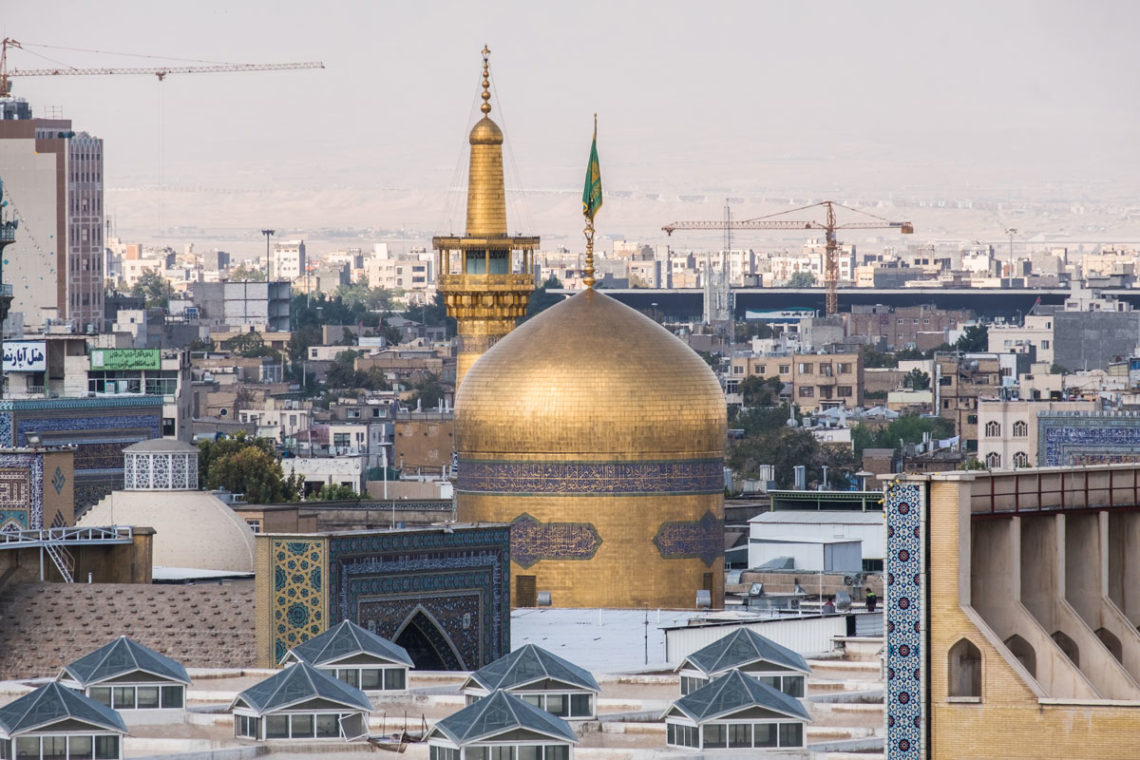
Imam Reza Holy Shrine, Mashhad, Iran
History of Mashhad
When you’re going to travel to Mashhad, it’s better to know more about its rich history as well. In the unification of greater Iran by the Safavid empire, the small unheard-of city of Sanabad (old Mashhad), located in the path of the ancient trade route of Silk road, quickly flourished to mark its existence in the Persian history. Before Islam, Tous and Neyshabour were the most famous and prosperous cities of the region, outshining Sanabad. Safavid reign put Sanabad a bit on the radar and people started to notice it. For many years after, Sanabad was considered to be an exile city for those the local governments didn’t like and sometimes ended up ruthlessly executing.
One of the most famous people who was banished to Sanabad, was Imam Reza, the eighth Shia Imam who opposed the Caliphate and his government. In the year 815 A.D, he was exiled to Sanabad and later poisoned to death. A shrine was built over his grave and ever since, Shias inside of Iran and from around the world, pay their respects to the eighth Imam in a pilgrimage trip to Mashhad. If you are looking for the best hotels in Mashhad, check out this article: Top hotels in Mashhad
Travel to Mashhad, Capital of the central Khorasan province
After 2004, the great Khorasan province was divided into three smaller provinces; North Khorasan province, Razavi Khorasan province (Central Khorasan) and South Khorasan province. Mashhad, once the capital of the great Khorasan, now is the capital of the Central Khorasan province.
Mashhad is located 950 kilometers east of Tehran. The second most populous city of Iran is only 300 kilometers away from Herat, capital of Afghanistan, automatically flagging the city as the most critical trading hub in the east.
Mashhad is home to more than 3 million people of different backgrounds and ethnicity. Whether Persians, Turks, Uzbeks, Tajiks, Kurds or even Tatars, people of Mashhad get along quite nicely and are truly nice and friendly to tourists. for more information about Mashhad attractions, check out this article: 6 Must-See Places during your trip to Mashhad
Weather
From the north, Mashhad is hugged by the desert of Tous. It has reasonably moderate weather for the most part of the year but having an enormous desert as a neighbor changes the climate dramatically for a good three or four months. Meteorology records indicate that extreme winter and summer weather makes Mashhad undesirable for a good portion of the year.
In the middle of the winter (early December to late January), the temperature drops down to -5 centigrade, while summer (late June to late September) brings it up back to nearly 35 centigrade. So, if you want to travel to Mashhad, consider booking a tour for spring or early fall before the weather gets intolerable.
So, Where to start from?
If you’re are a tourist or a tour planner working on an amusing 2-3 days package, I recommend that you start with the Haram. The vast area of the Haram combined with its nine massive Sahns (courtyards in Islamic architecture) definitely take a lot of time on foot to cover, while the gorgeous architecture and masterful tile and mirror work add more aesthetic aspect to the plan/package. The inspiriting beauty of the shrine relaxes the soul.
Haram, house of pilgrimages and Shia’s mausoleums in Iran
If you’re giving lots of thoughts and careful planning to travel to Mashhad but for some reason it gets canceled and you feel ashamed for bragging about it to everyone, you can always say this: “Imam Reza natalabide.” It literally means that Imam Reza hasn’t summoned you, probably because something unfortunate might’ve happened if you had traveled to Mashhad. Job well done. You’ve successfully saved your dignity. With this simple sentence, you can keep your head high, shamelessly.
It may seem odd, blaming the spirit of a long gone leader for not allowing a person to visit a certain place. However, the love and respect Iranian people keep in their heart for Imam Reza are so deeply rooted in their souls that they accept his will. Without the faintest shadow of a doubt, the first thing any traveler that actually makes it to Mashhad does is to walk past the entrance gates of the Haram. The shining dome of Haram is made of gold and its minarets in blue scratch the skyline.
The holy shrine, clustered by its numerous Sahns, attracts more than 25 million tourists throughout an entire year, many of them pilgrims arriving on this divine spot to pay their respects and to make amends to Imam Reza for their wrongdoings.
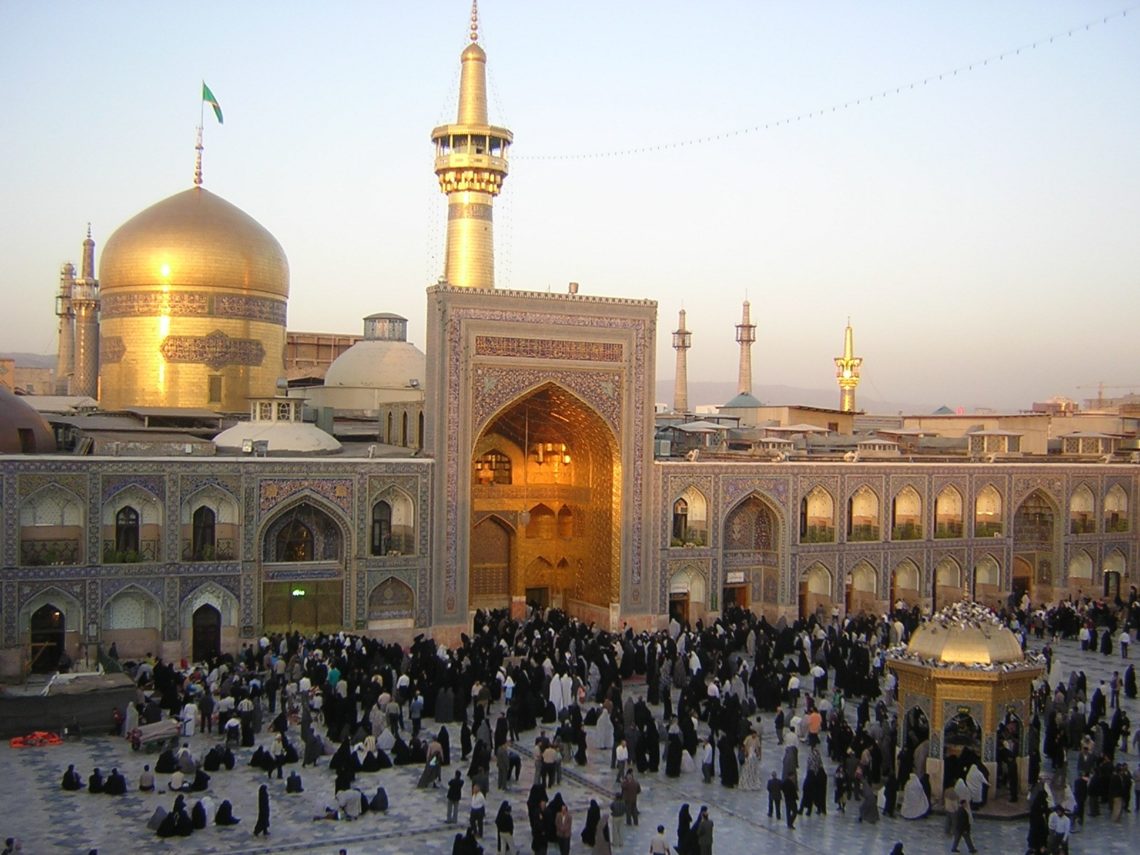
Imam Reza Holy Shrine, Mashhad, Iran
Tomb of Ferdowsi
Another must-have or better say must-visit after your travel to Mashhad is Tomb of Ferdowsi. Mashhad is not only a place for martyrdom, but is also a place of reincarnation. The soul of the modern Persian language was reincarnated in the body of “Hakim Abol-Qasem Ferdowsi’s” epic poets book called the “Shahnameh” (translation: book of kings). After the Islamic invasion of old Persia, the old Persian language was fading away, slowly getting replaced by the Arabic language of the invading forces. Persian people were losing their identity and hope to fight back the linguistic invasion, except for a great poet called “Ferdowsi.” This elite Persian poem took it upon himself to save the Persian language (Farsi). In an everlasting effort, he spent 30 years of his life writing 50,000 distiches about a greater Iran, mythical Iranian heroes, and freedom. His poems infused a sense of patriotism and love for Iran into every soul and made everybody read and memorize his words. Finally, his efforts born fruit and the Persian language from was saved from utter extinction.
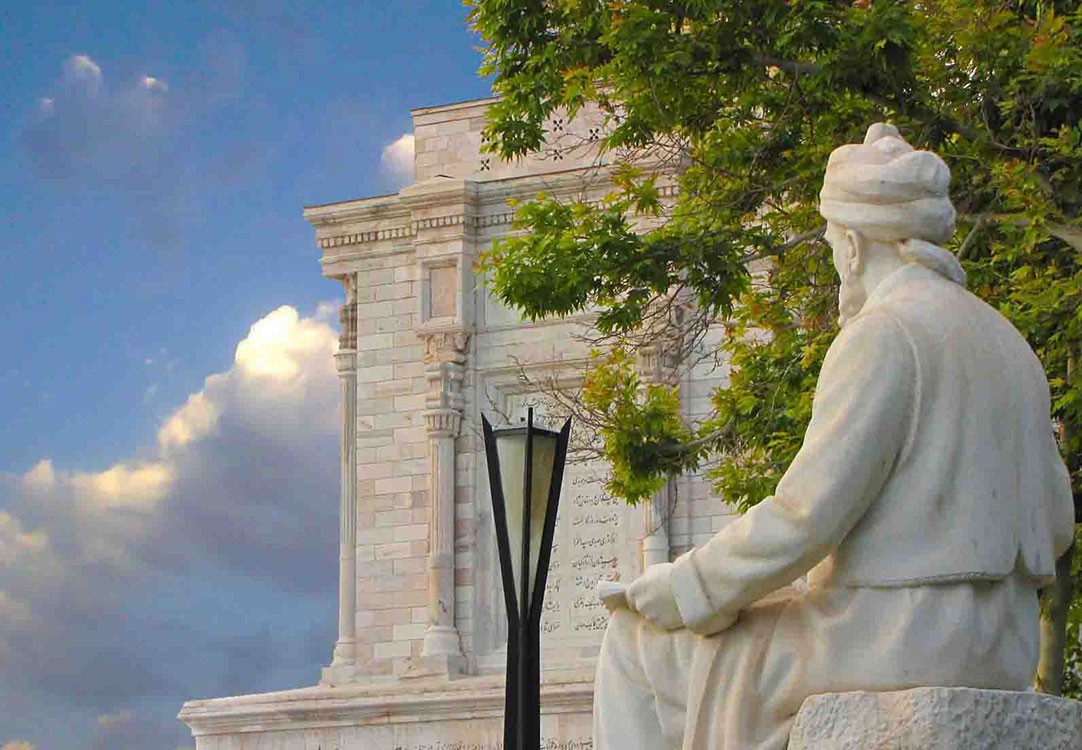
Tomb of Ferdowsi, Tus, Mashhad, Iran
The frequently renovated tomb of Hafez rests in the old Tous. A short ride from the city center to the northwest part of it takes any Iran-enthusiast to the resting place of one of its fearless heroes who spent a good portion of his life saving the Persian language which is it can still be heard in any street of any city of Iran, after a thousand years.
Best hotels in Mashhad
Motels and hotels surround the Haram are plentiful. Walking outside the Haram, you can see small cozy motels in pretty much any direction. These economy motels offer some the best low-cost rooms to visitors from neighboring countries or domestic pilgrims who want to stay in walking distance of the holy shrine. you can book Mashhad hotels easily through 1stQuest.
In Mashhad, room prices don’t go up necessarily based on the quality of a hotel’s services or how luxurious its rooms can be. Having a good view over the Harem and being close to it makes hotels more demanding and of course, more expensive. After all, what’s the point of traveling to Mashhad if you can’t have a clear sight to the uplifting shining minarets of the mausoleum?
1- Darvishi Hotel
All of the rooms in the Darvishi Royal Hotel Mashhad give you the comfort of a relaxing stay in deluxe and modern decor. Generally, you can choose Imperial or Queen Rooms, with a capacity of 3 and 2. Besides, Duplex Presidential, Duplex Indian, Duplex Ancient Iran, Duplex China, Duplex Egypt, and Duplex Arabic rooms give you comfort with the modern architecture of each country. You can also choose among single, double, triple and quad rooms. Most noteworthy, Penthouse Rome is the mixture of an ancient Roman sense of luxury and modern amenities, jewel of Darvishi Royal Hotel.
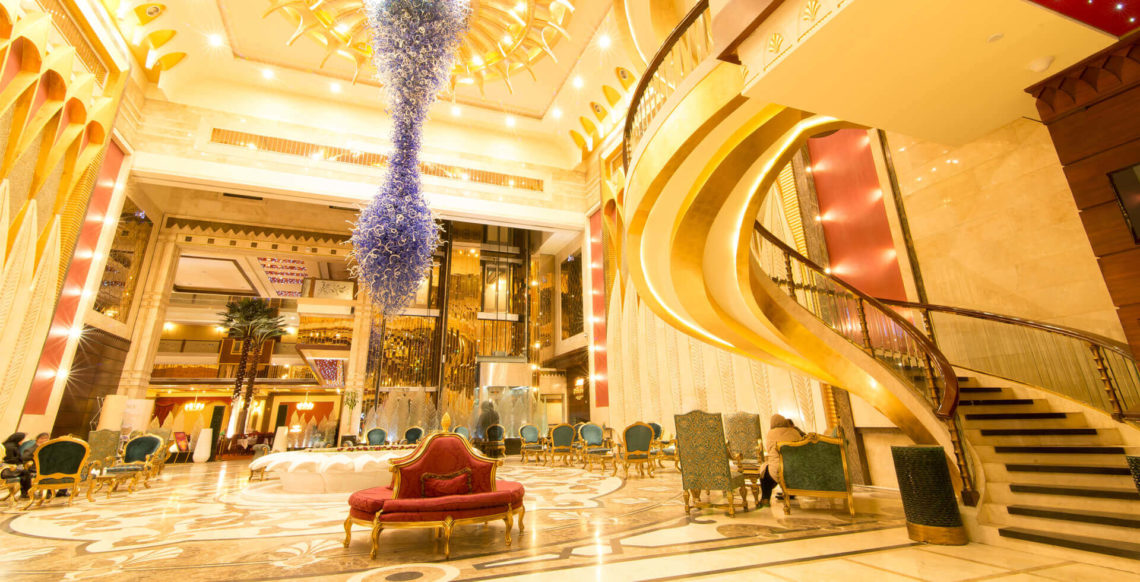
Darvishi Hotel, Mashhad, Iran
2- Ghasr Talaee Hotel
Ghasr Talaee International Hotel™ is the largest and the most luxurious hotel in the country. Haj Mahmoud Sezavar and his son Haj Amir Sezavar founded the hotel in 2007. After the death of Haj Mahmoud Sezavar Darbandi in March 2008, his second son continued the family operation. The hotel was designed using the unique architectural techniques of Haj Mahmoud Sezavar who had gained international experience abroad. With a similar eye for designing, his second son, Haj Amir Sezavar, continued the project based on current industry trends. On the holy day of Eid Al Fitr on September 19th, 2008, the hotel commenced operation. Ghasr Talaee International Hotel™ believes a key factor in enjoying one’s travels is selecting a suitable place to stay. The hotel provides guests with security, comfort and the finest amenities.
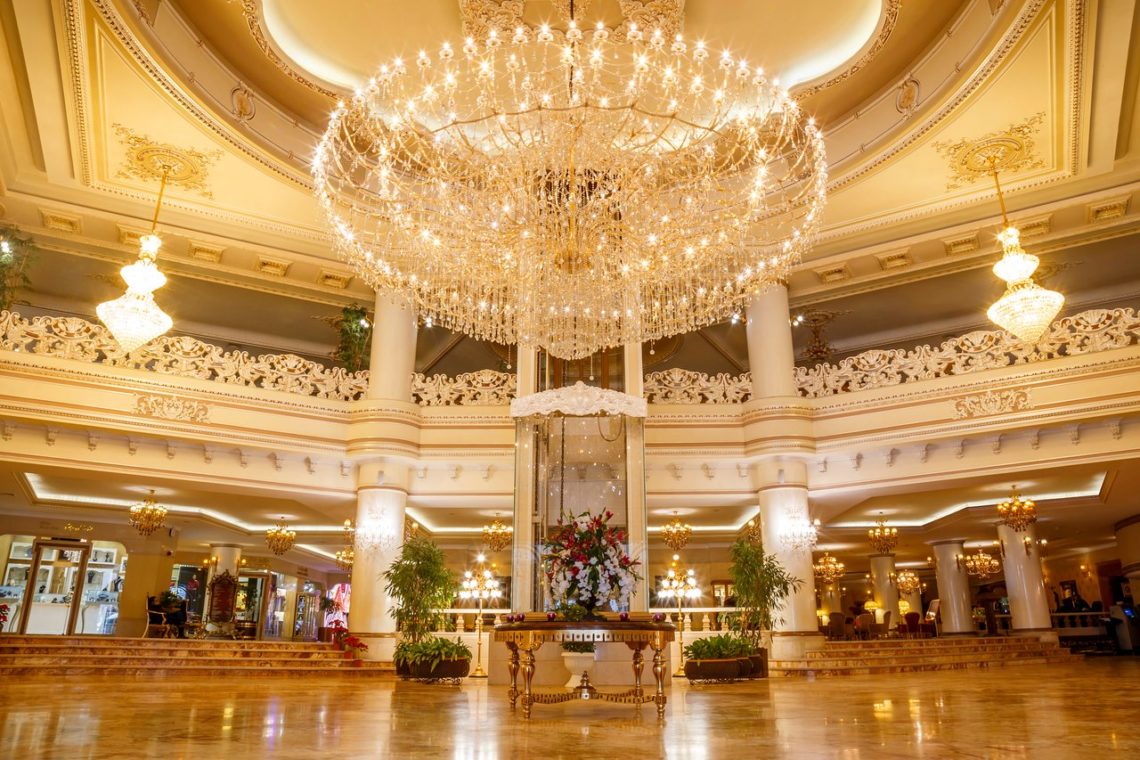
Ghasr Talaee Hotel Mashhad, Iran
Best places to eat in Mashhad
1- Alton and Pesarankarim Restaurant
After quenching the thirst for shopping in an ancient Iranian bazaar, the time has come to go for a delicious meal in a popular Mashhadi restaurant.
If you are an admirer of kebab or you’re really into tasty meat, then you should definitely check this place out. Just to give you a heads-up, it’s not a good choice if you’re a vegetarian or have some tourists that despise eating meat. The Baghali-polo with Mahiche (rice with green beans and lamb shank) of this restaurant has an unforgettable quality to it. The mouth-watering meat that melts In your mouth and the original Iranian rice aromatized and cooked using saffron beautifully decorates the plate and places an immortal taste inside every traveler’s mind that’s not easy to forget.
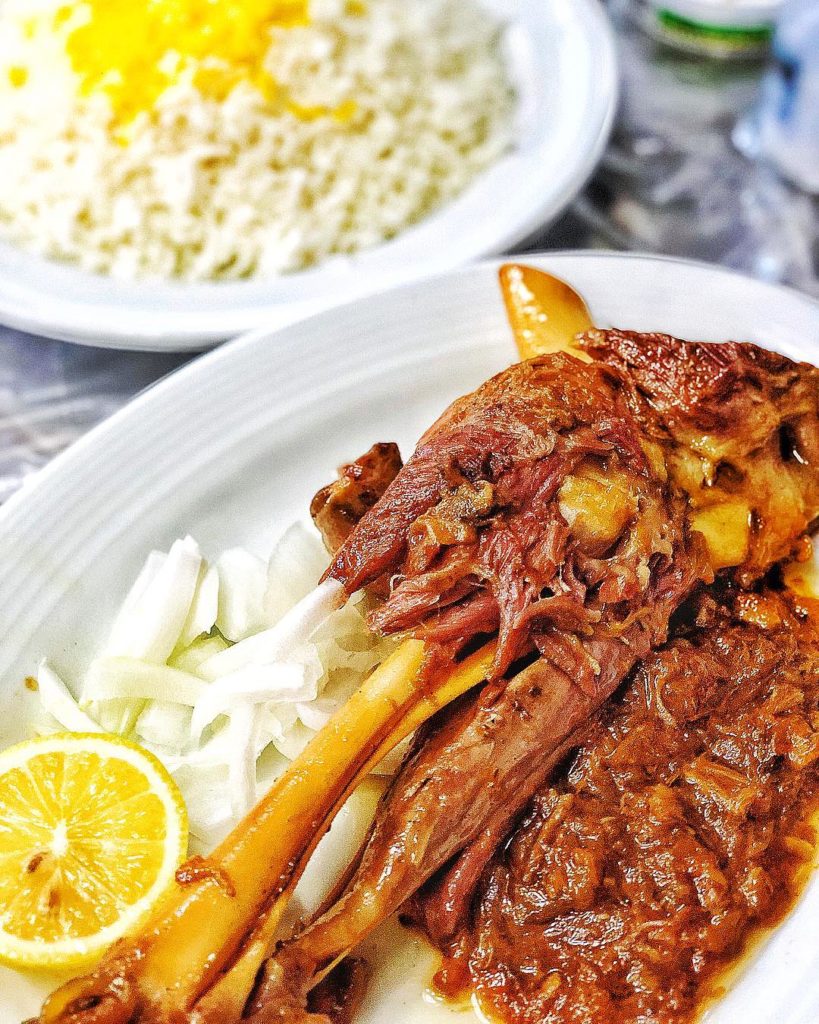
The Baghali-polo with Mahiche
2- Moein Darbari Restaurant
This prestigious restaurant is one of the oldest ones in Mashhad that over a decade ago opened its doors to the customers for the first time and undoubtedly, its food lives up to everybody’s expectations. Foursquare users hammer the delicacy of Darbari’s food into everybody’s head and many of them persist that they serve the best Iranian dishes in Mashhad. Shishlik and lamb shank are the best dishes to try out. Also, professional and respectful staff make the dining experience far more enjoyable and unique. There are some cons to this restaurant too. For example, if you are going to Darbari on a Friday noon, there is a good chance you get stuck in a waiting line for over an hour! So make sure to make reservations before you get out of the hotel.
